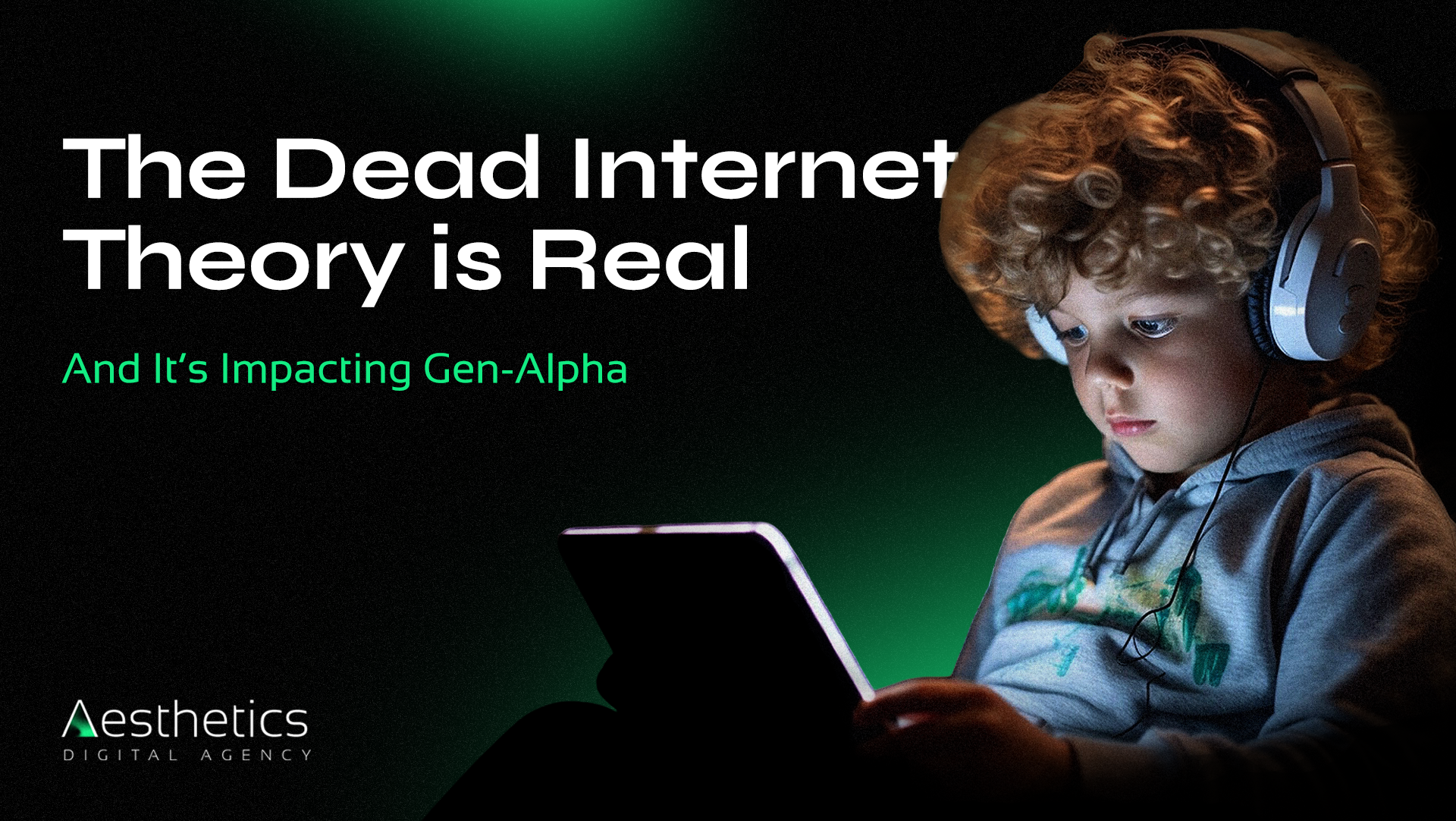I recently had a chaotic babysitting experience that struck a chord with thousands: two young boys, hooked on Skibidi Toilet and AI-generated YouTube Shorts, turned into “gremlins” the moment their parents left, only to revert to angelic behavior when they returned.
This made me think about the “dead internet theory.” This theory, buzzing across platforms like X, suggests the internet is increasingly a hollow shell of AI-generated noise, devoid of authentic human connection.
What Is the Dead Internet Theory?
The “dead internet theory,” first popularized in online forums like Reddit and X around 2021, argues that the internet, once a vibrant, human-driven space, has been overtaken by bots, algorithms, and AI-generated content.
Proponents claim that much of what we see online, from social media posts to viral videos, is either automated or heavily manipulated to maximize engagement, not authenticity. The theory suggests that genuine human interaction has been drowned out by a flood of low-quality, algorithmically curated content designed to keep users scrolling.
Instagram is experimenting with AI-generated profiles to make the app “more entertaining and engaging” pic.twitter.com/sFiDS7xMLq
— BNO News Live (@BNODesk) January 3, 2025
On X, users have pointed to examples like repetitive TikTok trends, AI-crafted memes, and even suspiciously uniform comment sections as evidence.
“The internet feels like a ghost town run by bots, same recycled content, same canned responses.”
While the theory is debated, with some calling it an exaggeration and others a wake-up call, it resonates with the Reddit user’s experience. The “poorly made AI shorts” that their girlfriend’s brothers binged were likely algorithm-driven, tailored to hook young viewers with minimal substance.
These videos, often featuring random animations or nonsensical humor like Skibidi Toilet, exemplify the kind of content the dead internet theory critiques: flashy, addictive, and ultimately empty.
The Short-Form Content Trap
Short-form content platforms like TikTok, YouTube Shorts, and Instagram Reels are built to captivate. Videos lasting 15 to 60 seconds deliver instant gratification through bright visuals, catchy audio, and rapid pacing.
For kids, whose brains are wired for novelty, this is digital catnip. Boys have an obsession with playing videos at “FULL BLAST” and mimicking “brainrot” phrases, even biting when their phone is taken away. This behavior isn’t just quirky; it’s a sign of how deeply short-form content can embed itself in young minds.
Neuroscience backs this up. A 2023 study in Frontiers in Psychology found that frequent exposure to short-form videos can shorten attention spans and increase impulsivity in children as young as 4.
Each video triggers a dopamine hit, creating a reward loop that makes kids crave the next clip. The prefrontal cortex, responsible for self-regulation, is still developing in children, making them especially vulnerable to this cycle. Over time, this can impair their ability to focus on slower, more meaningful tasks like reading or creative play.
While kids find such brainrot content hilarious, it often lacks educational or emotional depth, contributing to a digital landscape that feels increasingly hollow, echoing the dead internet theory’s concerns.
The Real-World Impact on Kids
Gen-Alpha has been observed running around, repeating phrases, and making a mess paints a picture of overstimulation. This isn’t just a one-off anecdote. A 2024 report from the American Academy of Pediatrics noted that excessive screen time, particularly with short-form content, can lead to issues like reduced impulse control, poor emotional regulation, and even delayed language development in young children.
The constant context-switching between videos mimics a slot machine, training kids to seek instant rewards rather than sustained engagement.
The user’s attempt to redirect the boys to outdoor play, only to be met with a bite, shows a troubling reality: devices can become a child’s primary source of comfort and stimulation. When taken away, some kids react with aggression or distress, a phenomenon psychologists link to behavioral addiction.
The fact that the boys “factory reset” into “good boys” when their sister returned suggests they’re still capable of self-regulation but only when external boundaries are enforced.
This ties back to the dead internet theory. The content flooding platforms like YouTube Shorts isn’t just random it’s algorithmically optimized to keep kids glued to screens. AI-driven recommendation systems prioritize engagement metrics over quality, pushing videos that are flashy, repetitive, or even disturbing.
Why It Matters: The Bigger Picture
The dead internet theory isn’t just about bots it’s about the erosion of meaningful digital experiences. For kids and even adults eg: The infamous “Shrimp Jesus,” which series of AI-generated images that went viral on Facebook in March 2024.
These images depict Jesus Christ combined with various crustacean elements, often creating surreal and unsettling visuals. The phenomenon is linked to the “dead internet theory,” suggesting that a significant portion of online activity, particularly on social media, is driven by AI and bots.
This means growing up in a world where attention is a commodity, harvested by algorithms that don’t prioritize well-being is prevalent.
Moreover, the theory raises questions about authenticity in the digital age. If much of the content kids consume is AI-generated or algorithmically curated, what does that mean for their understanding of reality? Skibidi Toilet might be a silly example, but its surreal, disconnected nature mirrors the broader trend of content that feels detached from human experience. Over time, this could shape a generation that struggles to discern real from artificial, meaningful from mindless.
What Parents Can Do To Save Their Kids From Brain Rot Content: Practical Steps
For parents or caregivers facing similar challenges, here are actionable strategies to counter the pull of short-form content and foster healthier digital habits:
1. Set Clear Screen Time Limits: The American Academy of Pediatrics recommends no screens for kids under 18 months (except video chats) and 1-2 hours of high-quality content for ages 2-5. For older kids, set daily or weekly limits using parental control apps like Qustodio or Screen Time on iOS.
2. Curate Content Intentionally : Instead of letting algorithms dictate, hand-pick content like educational shows on PBS Kids or interactive apps like Toca Boca. Create playlists on YouTube with vetted videos to avoid the autoplay rabbit hole.
3. Encourage Offline Alternatives: Replace screen time with engaging activities like board games, outdoor play, or creative hobbies like drawing or building. The Reddit user’s failed attempt at outdoor play shows kids may resist at first, so start small and make it fun like scavenger hunts or family sports.
4. Model Healthy Tech Use: Kids mimic adults. If you’re constantly scrolling, they’ll see it as normal. Set device-free times, like during meals, to show that life exists beyond screens.
5. Talk About Content: Watch with your kids occasionally and discuss what they’re seeing. Ask questions like, “Why do you like this?” or “What’s this video teaching you?” This builds critical thinking and helps them process content mindfully.
6. Use Tech to Block Tech: Enable YouTube’s Restricted Mode to filter out inappropriate content, or use apps like Freedom to block TikTok or Shorts during certain hours. For younger kids, consider devices like the Amazon Fire Kids Tablet, which offers robust parental controls.
7. Educate About Algorithms: For older kids, explain how platforms use algorithms to keep them hooked. A simple conversation about why their feed keeps showing Skibidi Toilet can demystify the internet and empower them to make better choices.







